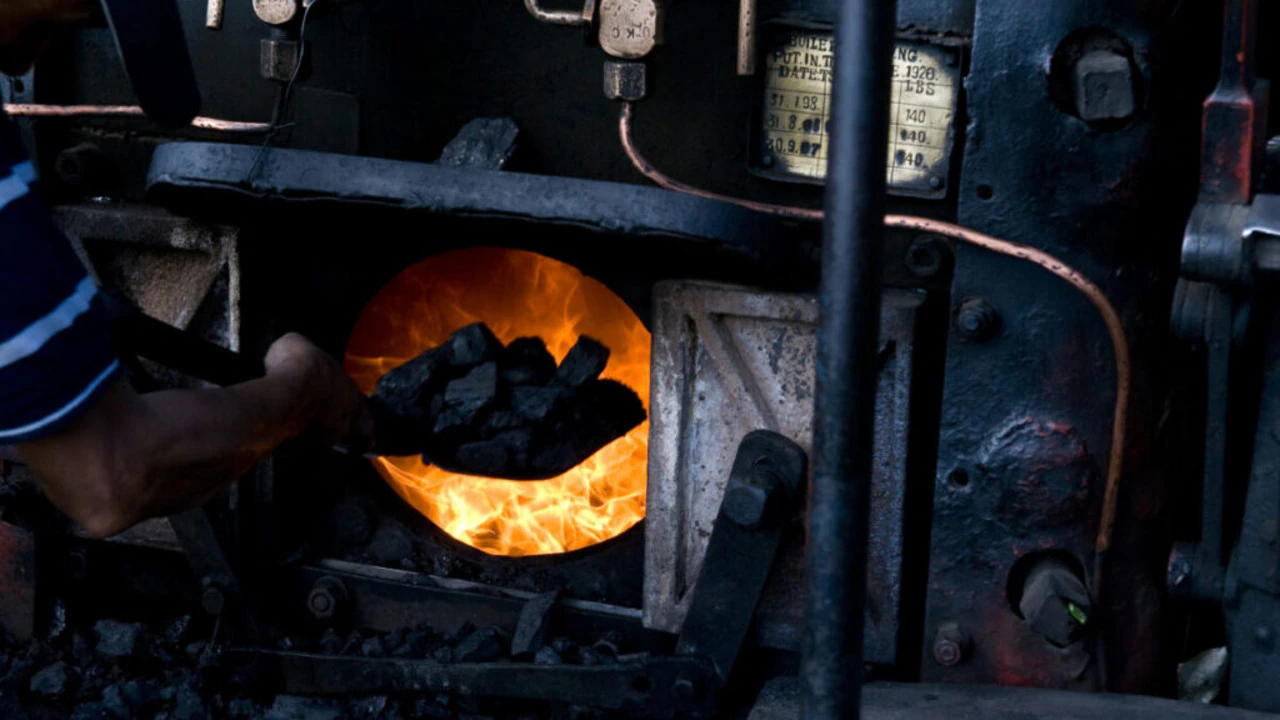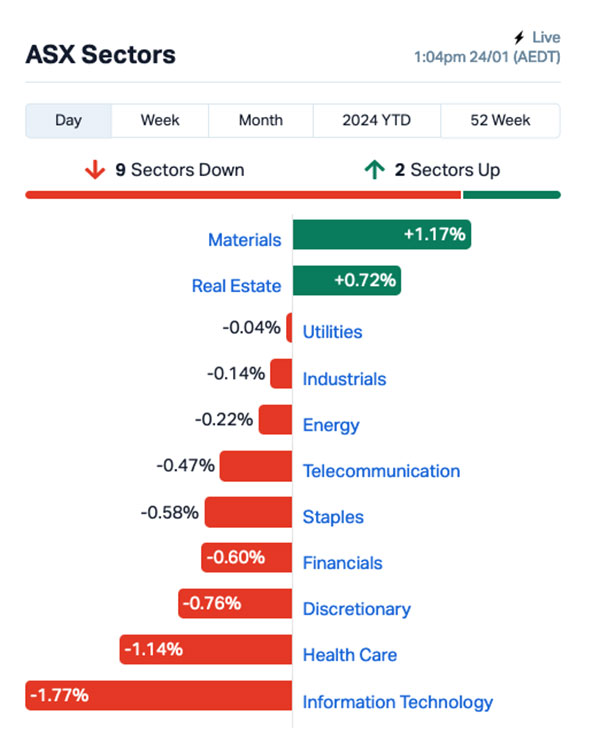- Pilbara Minerals, MinRes and IGO all report as lithium earnings take a hit
- MinRes will run Wodgina below capacity in move to supply discipline, but keeps long term growth plans in place
- IGO pledges BD improvements as it digests further impairment on disastrous Western Areas transaction
Pilbara Minerals (ASX:PLS) has confirmed it won’t be paying a dividend in the first half of 2024, after an 82% fall in statutory profit after tax to $220 million, showing the impact of the sharp slide in lithium prices.
Spot spodumene prices have tumbled from US$8000/t in late 2022 to just US$850/t today, slashing profits across the lithium sector’s largest players.
PLS, Mineral Resources (ASX:MIN) and IGO (ASX:IGO) all reported on a massive day for battery metals investors.
The former’s earnings fell 77% to $415m from $1.812b in H1 FY23, with revenue down 65% to $757m and underlying profit after tax off 78% to $273m. Prices for its product, which deteriorated in the December quarter, fell 67% to US$1645/t in the December half.
Mineral Resources issued a 20c interim dividend, down 83% on a year earlier, a fall in quantum from $229.7m this time last year to $39m this year. While its profit was up 33% to $518m, that was largely driven by the receipt of payments from Albemarle for a restructure of its JVs on the Wodgina mine and Kemerton lithium hydroxide plant. Underlying EBITDA fell 28% to $675m with a resurgent iron ore contributing close to equal amounts of its earnings as lithium.
Finally, IGO issued an 11c per share (~$83m) fully franked interim dividend, down from 14c a year earlier, though its early results suggest the 74c total payout seen in FY23 is an impossibility.
Having already written down almost $1 billion from the value of its Western Areas acquisition last year, falling nickel pricing saw IGO book a further $171.8m impairment charge at the Cosmos and Forrestania mines picked up in the ill-advised $1.3b transaction.
That contributed to a 53% fall in net profit after tax to $288.3m, with revenue down 19% to $438.2m, while IGO’s share of NPAT from its TLEA JV with Tianqi — the source of its 24.99% stake in the world class Greenbushes lithium mine, fell from $631.4m in H1 FY23 to $495.2m in H1 FY24.
That was shielded in part by lagging price arrangements unique to Greenbushes, though those were also heavily responsible for a decision to reduce output for FY24 from 1.4-1.5Mt to 1.3-1.4Mt, with its offtake and JV partner Tianqi reducing its spod supply demands because the lag in concentrate pricing hit its chemical margins.
MinRes flags supply discipline as price hit bites
MinRes has flagged plans to focus on costs, aiming to bring them down to the US$320-340/t range by the middle of the year to weather the low-points of the lithium cycle at its Wodgina and Mt Marion mines.
But MD Chris Ellison also told analysts and media today the company, Australia’s second largest producer by spodumene capacity after Albemarle, would exercise a form of supply discipline to avoid pushing spodumene prices down even further.
In the current pricing environment it will run only two of the three complete trains at the Wodgina JV with Albemarle, where MinRes’ share of SC6 equivalent production is expected to be 210-240,000t in FY24.
At the same time, there are no plans to curtail its Mt Marion and Bald Hill mines where MinRes only operates a singular processing plant.
“There is just simply not enough demand out there to warrant us turning train three on and pushing the price further down,” Ellison said.
But he has maintained plans to expand production capacity to over 1Mtpa on an SC6 basis from FY27, pushing up to around 1.5Mtpa by FY28, saying the pricing environment will not change MinRes’ long term focus.
That will include the delivery of an additional three trains at Wodgina and an increase in output at Bald Hill to 250,000tpa by 2026 and 400,000tpa from FY27 with the construction of a new flotation plant.
“The one thing that we’ve learned is that we want to be production ready. So we want to have the plant ready to go,” Ellison said.
“Train 3 for example at Wodgina works right now. And we’re just alternating the three trains around so we’ve got two running at any given time.
“But the one thing we learned in the last downturn was get the capital spent, get the plant ready and be plant ready when the cycle starts to turn.”
PLS sees ‘positive signals’ in reported CATL mine closure
Lithium stocks received a boost a few days ago from news CATL would close down a lepidolite mine in China, a sign that swing material was finally coming out of an oversupplied market.
While his focus is on cost control, PLS MD Dale Henderson said the news was a ‘positive signal’ for hard rock lithium producers in Australia.
“I don’t have any unique insight around that, but I do find the news very interesting because if it is to be true it signals effectively a swing price for spodumene — i.e. a price which knocks out lepidolite supply,” he said.
“And being owned by CATL, being depending on which year the largest battery manufacturer globally, it there was ever a group who could keep a mine running it would be CATL.”
While prices have come down, Henderson said there would be no moves to up PLS’ product grade from its current discounted 5.2% Li2O rate or stockpile material with demand from customers remaining high.
Stake market analyst Megan Stals said PLS fell short on consensus forecasts, but said the deferred dividend was a ‘sensible move’.
“Pilbara Minerals results fell short of consensus forecasts, with a 65% year-on-year decline in revenue in the first half of FY24 as an ongoing side effect of lower lithium prices,” she said.
“Plibara’s relatively low unit costs have so far seen the company withstand softer pricing, providing a competitive advantage over others in the sector, yet the 16% increase in unit operating costs indicates that margins are being squeezed in the short term as the company moves ahead with two major expansion projects.
“Some investors may be disappointed that Pilbara is deferring its dividend, but given low lithium prices, it appears to be a sensible move for the balance sheet as headwinds continue to weigh on the sector. The company’s large relative size means there could be the opportunity to increase market share in time for the next lithium upturn.
“Speculation that Chinese battery maker CATL had closed its Jianxiawo mine in China saw lithium prices rise earlier this week, but short-to-medium-term supply is still projected to outpace demand, and EV demand from China is slowing.
“While this undoubtedly makes the current period challenging for Pilbara, EV demand is likely to reaccelerate in the near future, and longer-term investors could see the current price slump as an opportunity to buy the stock.”
IGO ups Greenbushes cost guidance
IGO confirmed it would see costs at the Greenbushes mine ramp up from priori guidance of $280-330/t (AUD) to $330-380/t as lower production hit the operation’s unit costs.
Greenbushes produced 771,000t at $306/t in the first half, but production is set to be lower in the second half after the JV owners agreed to reduce output in response to falling prices and lower offtake demand from Tianqi.
Focus also fell on the review of its disaster Western Areas deal and the company’s M & A and exploration plans, with the closure of the Forrestania and Nova nickel mines in the coming years to mean it will be solely reliant on its Tianqi lithium JV stake for revenue.
There was no obvious finger-pointing for investors to cling to in the review of the WSA transaction, with the post investment and integration review largely laying the blame on factors verging on the bleeding obvious, stating that valuation assumptions along with the deterioration of the nickel price, transaction processes including the assessment of downside risks and due diligence, and integration of the mid-construction Cosmos project during an inflationary period contributed to the company’s failings.
New MD Ivan Vella, who walked into firestorm around the collapse of the WA nickel industry and pointed criticism of the WSA deal made before his arrival, said the company’s history showed the Western Areas debacle was not reflective of its overall M & A success.
“Obviously, I’m working through the actions that come out of that review. I think it’s also important to stand back and look at the history of IGO,” Vella said.
“This was clearly a bad transaction that has destroyed some shareholder value. But there’s a number prior to that that have been extremely good.
“We’ve just spent a lot of time talking about that partnership with TLC and TLEA which is an enormously value accretive transaction and there’s several … prior to that.
“We’re only as good as our last decision and we appreciate that we’ve got to take accountability and make sure those changes are made through the business and we give you the confidence that we’ve really learned those lessons. That’s my work. I’m dedicated to it.
“I don’t want to preempt either (that) we’re sort of jumping, ‘oh we must do M&A’. I don’t think that we should draw that conclusion. I think we just need to go through and do this work knowing that Greenbushes as a foundation piece is a fantastic investment.
“It’s delivering high capital returns. It gives us a clear benchmark to work against.
“And if we do anything beyond that, we need to keep that in mind that we’re not diluting that value.”
While lithium prices have forced the curtailment of some production at Greenbushes this year, IGO says plans to complete a third process plant at the mine by H1 2025 to take its capacity to 2.1Mtpa remain in place, with studies underway on a fourth that would expand its total potential output to 2.5Mtpa.
Also in the lithium space today, Canadian producer Sayona Mining (ASX:SYA) was smashed, losing ~24% of its value after Piedmont Lithium (ASX:PLL) traded its entire stake in the miner for $59.9m at 5.2c per share.
Piedmont owns 25% and a slice of offtake from Sayona’s North American Lithium project in Quebec, Canada, where costs outstripped average realised prices by ~$450/t in the December quarter.
Lithium stocks share prices today
The post Ground Breakers: Lithium players cut returns as price collapse brings austerity into focus appeared first on Stockhead.



